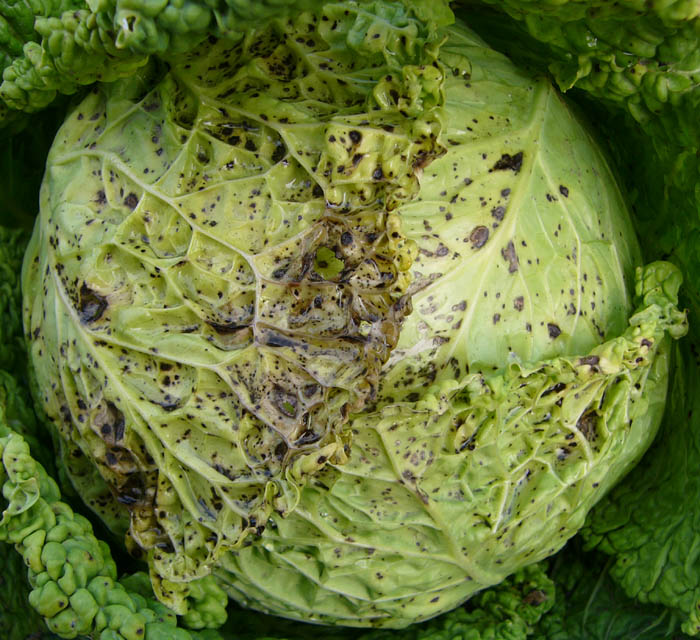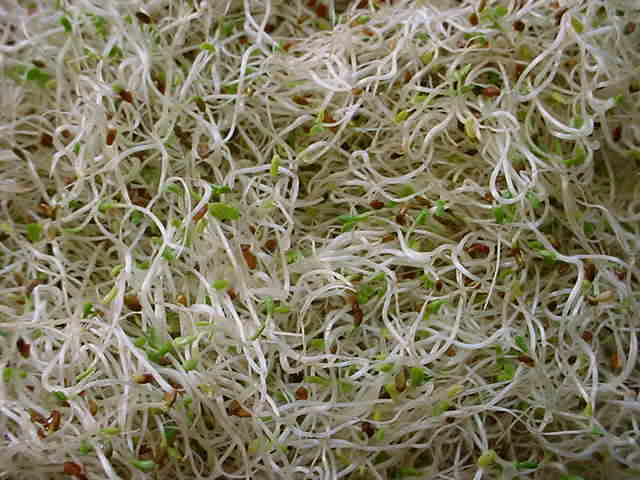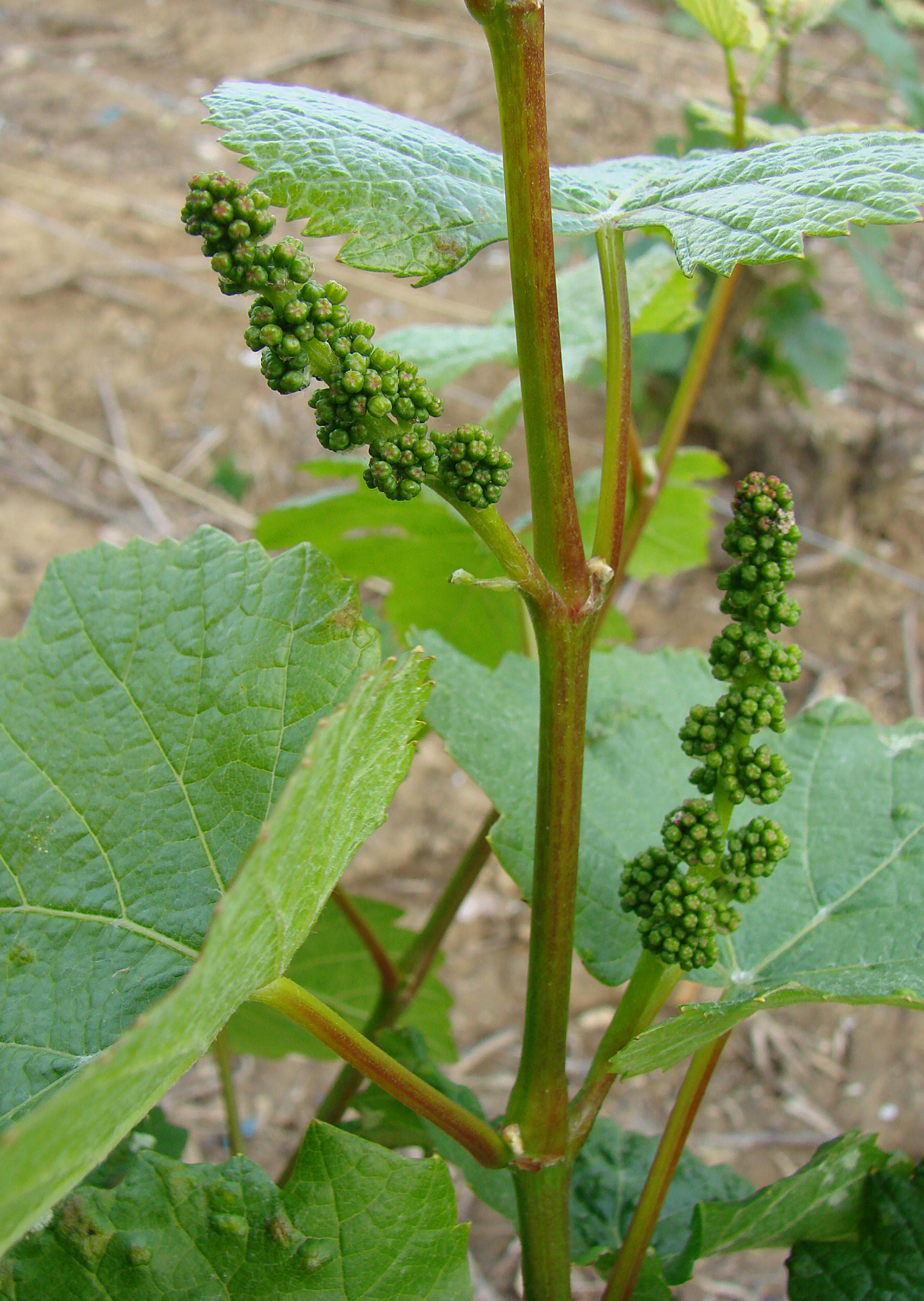|
Marafivirus
''Marafivirus'' is a genus of viruses in the order ''Tymovirales'', in the family ''Tymoviridae''. Plants serve as natural hosts. There are 11 species in this genus. Taxonomy The genus contains the following species: * ''Alfalfa virus F'' * ''Bermuda grass etched-line virus'' * ''Blackberry virus S'' * ''Citrus sudden death-associated virus'' * ''Grapevine asteroid mosaic associated virus'' * ''Grapevine Syrah virus 1'' * ''Maize rayado fino virus'' * ''Nectarine marafivirus M'' * ''Oat blue dwarf virus'' * ''Olive latent virus 3'' * ''Peach marafivirus D'' Structure Viruses in ''Marafivirus'' are non-enveloped, with icosahedral and isometric geometries, and T=3 symmetry. The diameter is around 30 nm. Genomes are linear, around 6-7kb in length. Life cycle Entry into the host cell is achieved by penetration into the host cell. Replication follows the positive stranded RNA virus replication model. Positive stranded RNA virus transcription is the method of transcription. Th ... [...More Info...] [...Related Items...] OR: [Wikipedia] [Google] [Baidu] |
Tymoviridae
''Tymoviridae'' is a family of single-stranded positive sense RNA viruses in the order ''Tymovirales''. Plants serve as natural hosts. There are 42 species in this family, assigned to three genera, with two species unassigned to a genus. Taxonomy The family includes the following three genera: * '' Maculavirus'' * '' Marafivirus'' * '' Tymovirus'' Additionally, the following two species are not assigned to a genus: * '' Bombyx mori latent virus'' * '' Poinsettia mosaic virus'' Proposed viruses * Culex tymovirusWang L, Lv X, Zhai Y, Fu S, Wang D, Rayner S, Tang Q, Liang G (2012) Genomic characterization of a novel virus of the family tymoviridae isolated from mosquitoes. PLoS One 7(7):e39845. * Fig fleck-associated virus Virology The virions are non-enveloped and isometric with a diameter of around 30 nm, with an icosahedral structure and a triangulation number T=3. The linear genome is between of 6–7.5 kilobases in length and encodes one large open reading frame. It ... [...More Info...] [...Related Items...] OR: [Wikipedia] [Google] [Baidu] |
Oat Blue Dwarf Virus
Oat blue dwarf virus (OBDV) is a plant pathogenic virus of the family ''Tymoviridae''. It replicates within leafhopper A leafhopper is the common name for any species from the family Cicadellidae. These minute insects, colloquially known as hoppers, are plant feeders that suck plant sap from grass, shrubs, or trees. Their hind legs are modified for jumping, and a ... vectors, and when these vectors feed, the virus is transmitted to the plant. It can infect oats and barley. References External links ICTVdB - The Universal Virus Database: Oat blue dwarf virus Tymoviridae Viral plant pathogens and diseases {{Virus-plant-disease-stub ... [...More Info...] [...Related Items...] OR: [Wikipedia] [Google] [Baidu] |
Viruses
A virus is a submicroscopic infectious agent that replicates only inside the living cells Cell most often refers to: * Cell (biology), the functional basic unit of life Cell may also refer to: Locations * Monastic cell, a small room, hut, or cave in which a religious recluse lives, alternatively the small precursor of a monastery w ... of an organism. Viruses infect all life forms, from animals and plants to microorganisms, including bacteria and archaea. Since Dmitri Ivanovsky's 1892 article describing a non-bacterial pathogen infecting tobacco plants and the discovery of the tobacco mosaic virus by Martinus Beijerinck in 1898,Dimmock p. 4 more than 9,000 virus species have been described in detail of the millions of types of viruses in the environment. Viruses are found in almost every ecosystem on Earth and are the most numerous type of biological entity. The study of viruses is known as virology, a subspeciality of microbiology. When infected, a host cell is ofte ... [...More Info...] [...Related Items...] OR: [Wikipedia] [Google] [Baidu] |
Tymovirales
''Tymovirales'' is an order of viruses with five families. The group consists of viruses which have positive-sense, single-stranded RNA genomes. Their genetic material is protected by a special coat protein. Description Tymoviruses are mainly plant pathogens first described in 2004. They are characterised by similarities in their replication-associated polyproteins. These account for the majority of their genomic coding capacity. They are considered to form a group, phylogenetically, referred to as flexiviruses, with filamentous virions A virus is a submicroscopic infectious agent that replicates only inside the living cells of an organism. Viruses infect all life forms, from animals and plants to microorganisms, including bacteria and archaea. Since Dmitri Ivanovsky's 1 .... References Bibliography * External links ICTV Virus Taxonomy 2009 UniProt Taxonomy {{Use dmy dates, date=April 2017 Virus orders Riboviria ... [...More Info...] [...Related Items...] OR: [Wikipedia] [Google] [Baidu] |
Alfalfa Virus F
Alfalfa () (''Medicago sativa''), also called lucerne, is a perennial flowering plant in the legume family Fabaceae. It is cultivated as an important forage crop in many countries around the world. It is used for grazing, hay, and silage, as well as a green manure and cover crop. The name alfalfa is used in North America. The name lucerne is the more commonly used name in the United Kingdom, South Africa, Australia, and New Zealand. The plant superficially resembles clover (a cousin in the same family), especially while young, when trifoliate leaves comprising round leaflets predominate. Later in maturity, leaflets are elongated. It has clusters of small purple flowers followed by fruits spiralled in 2 to 3 turns containing 10–20 seeds. Alfalfa is native to warmer temperate climates. It has been cultivated as livestock fodder since at least the era of the ancient Greeks and Romans. Etymology The word ''alfalfa'' is a Spanish modification of the Arabic word ''al-faṣfa� ... [...More Info...] [...Related Items...] OR: [Wikipedia] [Google] [Baidu] |
Bermuda Grass Etched-line Virus
) , anthem = "God Save the King" , song_type = National song , song = "Hail to Bermuda" , image_map = , map_caption = , image_map2 = , mapsize2 = , map_caption2 = , subdivision_type = Sovereign state , subdivision_name = , established_title2 = English settlement , established_date2 = 1609 (officially becoming part of the Colony of Virginia in 1612) , official_languages = English , demonym = Bermudian , capital = Hamilton , coordinates = , largest_city = Hamilton , ethnic_groups = , ethnic_groups_year = 2016 , government_type = Parliamentary dependency under a constitutional monarchy , leader_title1 = Monarch , leader_name1 = Charles III , leader_title2 = Governor , leader_name2 = Rena Lalgie , leader_title3 = Premier , leader_name3 = Edward David Burt , legislature = Parliament , upper_house = Senate , lower_house = House of Assembly , area_km2 = 53.2 , area_sq_mi = 20.54 , area_rank = , percent_water = 27 , elevation_max_m = 79 , ... [...More Info...] [...Related Items...] OR: [Wikipedia] [Google] [Baidu] |
Blackberry Virus S
The blackberry is an edible fruit produced by many species in the genus ''Rubus'' in the family Rosaceae, hybrids among these species within the subgenus ''Rubus'', and hybrids between the subgenera ''Rubus'' and ''Idaeobatus''. The taxonomy of blackberries has historically been confused because of hybridization and apomixis, so that species have often been grouped together and called species aggregates. For example, the entire subgenus ''Rubus'' has been called the ''Rubus fruticosus'' aggregate, although the species ''R. fruticosus'' is considered a synonym of '' R. plicatus''. '' Rubus armeniacus'' ("Himalayan" blackberry) is considered a noxious weed and invasive species in many regions of the Pacific Northwest of Canada and the United States, where it grows out of control in urban and suburban parks and woodlands. Description What distinguishes the blackberry from its raspberry relatives is whether or not the torus (receptacle or stem) "picks with" (i.e., stays with) th ... [...More Info...] [...Related Items...] OR: [Wikipedia] [Google] [Baidu] |
Citrus Sudden Death-associated Virus
''Citrus'' is a genus of flowering trees and shrubs in the rue family, Rutaceae. Plants in the genus produce citrus fruits, including important crops such as oranges, lemons, grapefruits, pomelos, and limes. The genus ''Citrus'' is native to South Asia, East Asia, Southeast Asia, Melanesia, and Australia. Various citrus species have been used and domesticated by indigenous cultures in these areas since ancient times. From there its cultivation spread into Micronesia and Polynesia by the Austronesian expansion (c. 3000–1500 BCE); and to the Middle East and the Mediterranean (c. 1200 BCE) via the incense trade route, and onwards to Europe and the Americas. History Citrus plants are native to subtropical and tropical regions of Asia, Island Southeast Asia, Near Oceania, and northeastern Australia. Domestication of citrus species involved much hybridization and introgression, leaving much uncertainty about when and where domestication first happened. A genomic, phylogenic ... [...More Info...] [...Related Items...] OR: [Wikipedia] [Google] [Baidu] |
Grapevine Asteroid Mosaic Associated Virus
''Vitis'' (grapevine) is a genus of 79 accepted species of vining plants in the flowering plant family Vitaceae. The genus is made up of species predominantly from the Northern Hemisphere. It is economically important as the source of grapes, both for direct consumption of the fruit and for fermentation to produce wine. The study and cultivation of grapevines is called viticulture. Most cultivated ''Vitis'' varieties are wind-pollinated with hermaphroditic flowers containing both male and female reproductive structures, while wild species are dieceous. These flowers are grouped in bunches called inflorescences. In many species, such as ''Vitis vinifera'', each successfully pollinated flower becomes a grape berry with the inflorescence turning into a cluster of grapes. While the flowers of the grapevines are usually very small, the berries are often large and brightly colored with sweet flavors that attract birds and other animals to disperse the seeds contained within the berrie ... [...More Info...] [...Related Items...] OR: [Wikipedia] [Google] [Baidu] |
Maize Rayado Fino Virus
Maize ( ; ''Zea mays'' subsp. ''mays'', from es, maíz after tnq, mahiz), also known as corn (North American and Australian English), is a cereal grain first domesticated by indigenous peoples in southern Mexico about 10,000 years ago. The leafy stalk of the plant produces pollen inflorescences (or "tassels") and separate ovuliferous inflorescences called ears that when fertilized yield kernels or seeds, which are fruits. The term ''maize'' is preferred in formal, scientific, and international usage as a common name because it refers specifically to this one grain, unlike ''corn'', which has a complex variety of meanings that vary by context and geographic region. Maize has become a staple food in many parts of the world, with the total production of maize surpassing that of wheat or rice. In addition to being consumed directly by humans (often in the form of masa), maize is also used for corn ethanol, animal feed and other maize products, such as corn starch and cor ... [...More Info...] [...Related Items...] OR: [Wikipedia] [Google] [Baidu] |
Nectarine Marafivirus M
The peach (''Prunus persica'') is a deciduous tree first domesticated and cultivated in Zhejiang province of Eastern China. It bears edible juicy fruits with various characteristics, most called peaches and others (the glossy-skinned, non-fuzzy varieties), nectarines. The specific name ''persica'' refers to its widespread cultivation in Persia (modern-day Iran), from where it was transplanted to Europe. It belongs to the genus ''Prunus'', which includes the cherry, apricot, almond, and plum, in the rose family. The peach is classified with the almond in the subgenus ''Amygdalus'', distinguished from the other subgenera by the corrugated seed shell (endocarp). Due to their close relatedness, the kernel of a peach stone tastes remarkably similar to almond, and peach stones are often used to make a cheap version of marzipan, known as persipan. Peaches and nectarines are the same species, though they are regarded commercially as different fruits. The skin of nectarines lacks ... [...More Info...] [...Related Items...] OR: [Wikipedia] [Google] [Baidu] |





